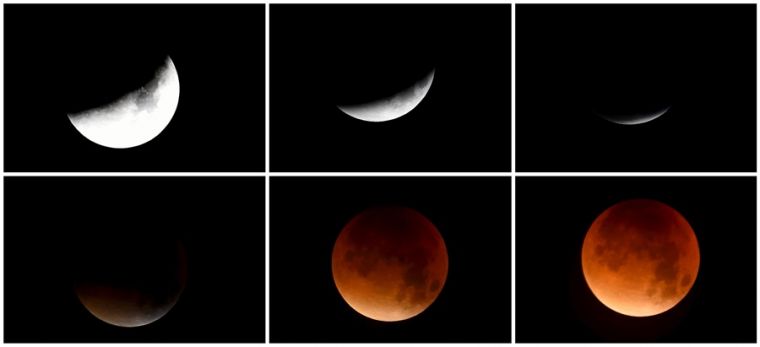No apocalypse as supermoon's eerie beauty awes, delights people worldwide

Months before it happened, the blood-red supermoon seen by millions of people around the world on Sunday had spawned nightmarish fears, with some believing that this rare astronomical phenomenon could be a sign of doom.
But instead of ushering the apocalypse, the supermoon brought awe and delight to astronomers and the general public who saw the beauty of the astronomical event.
These stargazers were treated to the rare sight of the moon appearing 14 percent bigger and 30 percent brighter than usual by being just 226,000 miles away from the Earth—the closest it can get to our planet, according to the National Aeronautics and Space Administration (NASA).
"There's no physical difference in the moon. It just appears slightly bigger in the sky," planetary geologist Noah Petro, with NASA's Goddard Space Flight Center in Greenbelt, Maryland, said.
The moon looked like it was blood red because of sunlight scattered by the Earth's atmosphere as our planet moves directly between the moon and the sun.
The eclipse, which lasted 1 hour and 11 minutes, was seen in five continents: Europe, North America, South America, Africa and parts of West Asia and the eastern Pacific. The supermoon was more visible in some parts of the world than in others due to variations in cloud cover.
This rare double astronomical phenomenon last happened in 1982, and it won't happen again until 2033.
The eclipse also marked the end of a tetrad, a series of four total lunar eclipses happening six months apart. There are eight tetrads in the 21st century.
Because the moon is not perfectly round, its distance from Earth varies by about 31,000 miles (49,900 km) as it circles around the planet every 27 days.
At its closest point, known as perigee, the moon comes as close as 225,622 miles (363,104 km) from Earth. At apogee, the most distant point, the moon is 252,088 miles (406,696 km) away.
In an interview with BBC News, Dr. Robert Massey, deputy executive director of the United Kingdom's Royal Astronomical Society, described the eclipse as an "incredibly beautiful event."
Stunning photos from around the world—from Belgium to England, from Las Vegas to Switzerland—captured the supermoon's eerie beauty.
In Los Angeles, hundreds of stargazers gathered at the lawn of Griffith Observatory to watch the rare celestial show, which listening to Beethoven's "Moonlight Sonata" played by 14-year-old pianist Ray Ushikubo.











